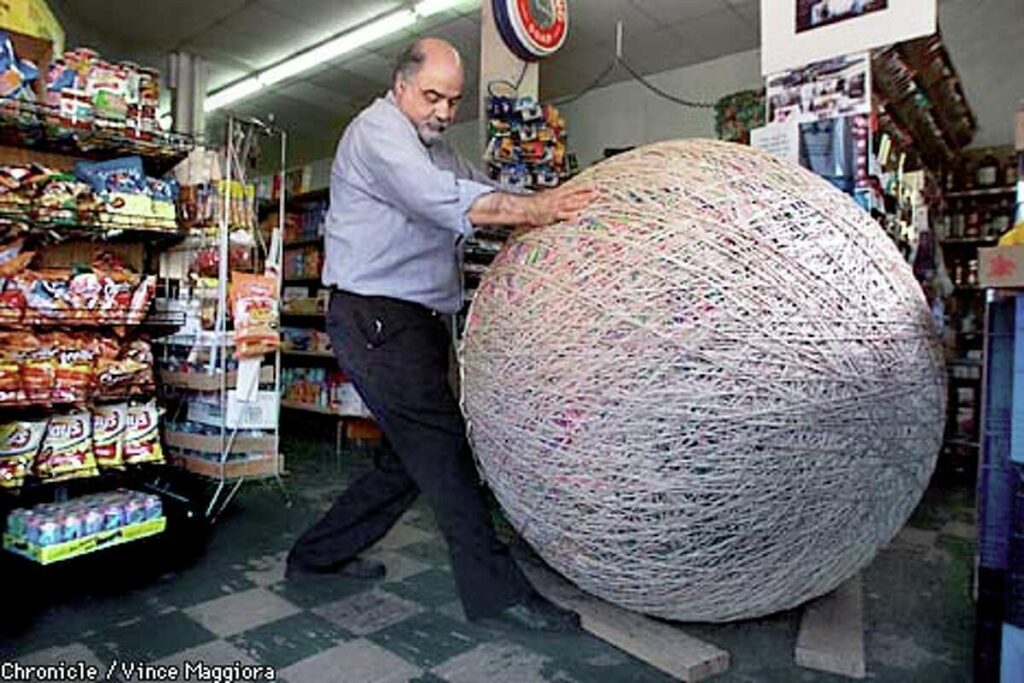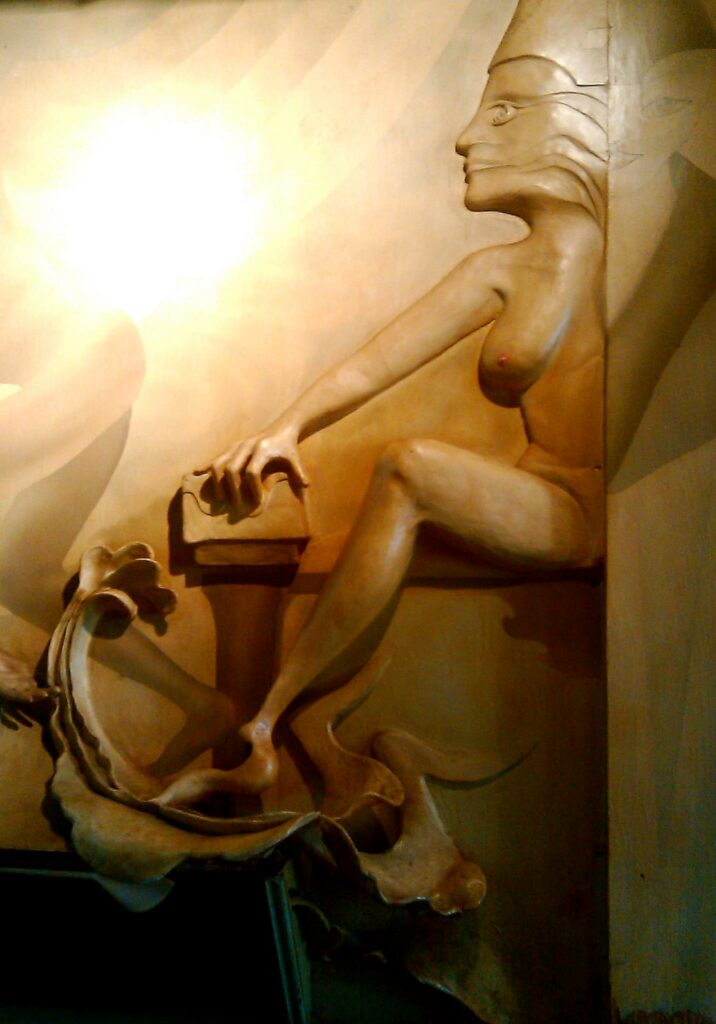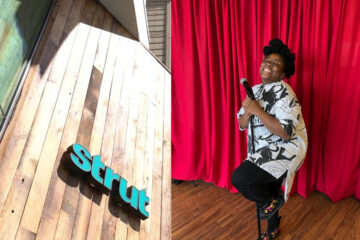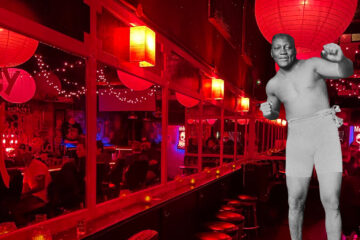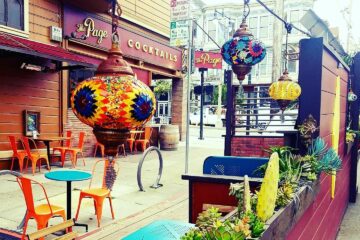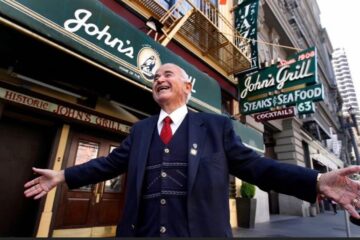The Long Strange History of The Lone Palm in the Mission
Long gone are the days of the Lone Palm.
Not the actual bar. The actual bar is still alive and well. However, the towering, flowering palm tree that had long lived in front of the bar is gone. It was a beautiful tree and a beacon for all those seeking a cocktail. It’s where many a customer would shelter under to smoke. It was also where quite a few couples would go to make out. The Lone Palm has always been notorious not only for their very generous martinis but for also being a date spot. Sadly, the tree had to be cut down a few years ago due to rot. But technically, the palm shouldn’t have been there in the first place as most palms are not indigenous to California. They were brought up from Mexico by Franciscan monks in the 18th century. However, San Francisco and particularly the Mission District, has long been a place where many transplants from distant shores have found a new place to root.
Including myself.
I arrived to the city in 2003, in the wake of the decline of the first Dot Com Boom and amidst a contentious mayoral election between local favorite Matt Gonzales and the candidate who is now our current state governor. I also arrived in the midst of that turbulent time, immediately needing a job. So I did the usual pounding of the pavement, done so many times before in the states and even abroad. With printed resumes in hand I walked over every inch of the city stopping into any place that seemed viable. I chased up on every possible lead no matter how tenuous. This was before Facebook. It was even before most bars had a website. Even a phone number would rarely be useful unless you had left your credit card or coat there the night before. You still had to do the in-person slog. One of those leads however, eventually led me to the Mission District and to the Attic bar. The Attic is also now gone but many will remember that dark, dank, terribly stinky place that yet pulsed with all the glorious tumult of a true local dive.
Unfortunately, I had arrived too late.

The palm tree after being cut down. Photo by Joe Kukura for Hoodline
Another person had just been hired, without much experience, because she had spanked the owner at a party the night before. Oh San Francisco, you are so deliciously weird. Regardless, as it was late in the day, my feet were blistered and I was feeling mightily defeated, I decided to stay and have a drink. And that is when I met the folks of the neighborhood.
Raoul bought me that drink in a welcome gesture, a sweet journalist bought me the next and I then met the door guy – one certain Chewy Marzolo of pizza and music fame who told me about a magical place called the Lone Palm. A magical place indeed, and one I would sling and settle in for the next eight years.
Does anyone remember the large rubber-band ball in the little store on 22nd Street next to the Lone Palm?
It was protected by an old blanket and you weren’t allowed to touch it by threat of the owner who would yell at you if you even tried. They wanted it to be recognized by the Guinness Book of World Records. They almost won. Aside from award winning and rubber band balls, I loved going into that old store filled with dusty old things of every imaginable sort. Old Christmas ornaments were shoved next to Ponds cold cream, 1950’s lipsticks melted on the shelves and rusted baking soda tins could be found amidst boxes of Epsom salts. It was a treasure trove of odd remnants of days past.
As it turns out, the entire building where the Lone Palm exists was actually originally created to be a grocery. Possibly built in 1895, according to researcher Robby Virus of Project Pimento, “Charles H. Bruns immigrated from Germany along with a couple of brothers, and seems to have done well for himself in the grocery business. By 1922, his brother Julius Bruns took over the grocery store at the corner while Charles started a cigar/tobacco business next door”.
Based on my last article about Mario’s Bohemian Cafe Store, I am beginning to think that for the San Francisco prohibition era, cigar stores were always also speakeasies. It was perhaps a kind of code, come and buy a cigar – wink, wink.
Julius died tragically in 1927 and the terrible Depression then descended. They may not have been able to maintain the business. But in a move that Mission neighborhood residents will know well, some folks bought the building cheaply during economic decline and renovated it hoping for future profits once the downturn again went into an upswing. The renovator who modernized the decor – which was, in the 1930’s, Art Deco, and still remains – may have been a Frenchman by the name of Charles F. Monestier, who turned the once tobacco shop into a proper bar. In 1940, he brought in new partner Charles M. Gallagher and called the spot Charlie’s.
Thus we usher in the rebel history of the Irish in San Francisco.
Though Irish immigration had begun much earlier and many had settled in the Mission District after the 1906 earthquake, by the 1940’s the area was a hotbed of Irish congregation, community and resistance. Glassworkers, carpenters and shipyard builders were fighting for Unionization in SF as well as independence abroad. In 1948, Taoiseach Éamon de Valera, who had been the prime minister on the ticket of resisting British occupation but had just lost the election, visited San Francisco. At a speech at the St. Francis Hotel, he declared that, “[our] aim in Ireland is to end partition. But so long as British forces occupy part of Ireland it is impossible for us to be friends”.
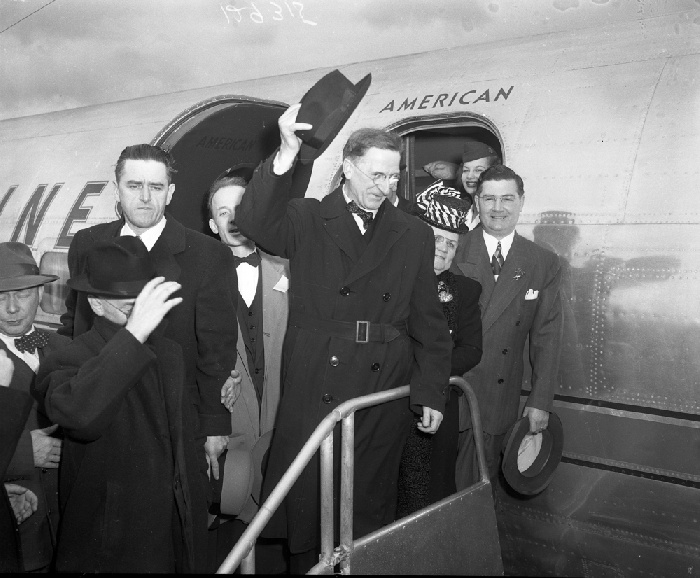
Eamon de Valera getting off his airplane at San Francisco Municipal Airport, March 12, 1948. San Francisco Examiner photograph / Courtesy of a Private Collector
It is unlikely that he visited Charlie’s on this tour to promote Irish independence. However, I have no doubt that many newspaper articles of his visit were read at that bar and potentially, many who frequented the joint went to see him speak. That long ago history was still slightly evident when I first started working at the Lone Palm as Johnny Foley, famed tenor of rebel songs, who has a bar named in his honor or so I was told, was often there for Happy Hour.
Older then, he was still irascible and wont to sing those rebel songs at any given opportunity. But that’s also probably because the bar in 1962, again became an enclave of Irish ownership. Danny Boyle, not to be conflated with the Danny Boyle of recent fame, ran it as Ireland’s 32 until 1982. Johnny likely would have felt comfortable there then and as a result, kept coming back.
Being the new hire at a local bar is always a process of humility, overt friendliness, and learning the lay of the land. Though the work itself is almost everywhere the same, each local bar has its own distinctive character and most significantly, its own regulars. A fellow on a date and having enjoyed a generous martini and perhaps a make-out session under the palm might tip very well. A Saturday night might yield many a celebrating customer and copious, if soaked, dollar bills strewn along the bar. But the regulars are our dependable bread and butter. They are the ones who help pay our rent. They are also often the ones who help to make the work better.
Usher in “Darkie Corner”.
That was what they called it. By ‘they’, I mean a group of friends who were of a brown complexion, including Raoul, that named it such as both a joke and a claiming. They would gather around the corner of the bar – which was highly prized real estate – in the early evening and as teachers, musicians, and thinkers, helped to create the tenor of the night ahead. They also suited well the more recent additions to the bar’s aesthetic with their dashing style.
In 1983 the bar was bought by Szuki otherwise known as Gale Sakumoto who turned it into the Mirage. She built a wall fountain that poured out of an Egyptian style face and brought in some palms. Palms that were purchased from the Palm nursery up the street owned by Mark Green who along with Jane Seabrook would eventually buy the bar in 1991 and plant a towering tree out front.
The bar has been described as where, “1946 Morocco meets 1975 Miami” by Emma Silvers in the Chronicle. An apt description particularly as Miami existed, ahem, in more ways than merely the decor when I first started working there. The first thing I did upon getting regular shifts was to kick out the coke dealers. The Lone Palm certainly wasn’t alone in this regard. The 90’s Dot Com boom had brought in transplants with far too much money to spend and waste, who displaced many who were already settled, thereby riling up and ravaging the city. The vestiges of which lingered, everywhere, long after the bust.
After that particular expulsion, the bar truly became a kind of hidden oasis on 22nd Street where only old movies played on the television rather than sports, martinis gleamed in the candlelight and smoke swirled through the room. What?! Yes, in a weird twist, the bar was a smoking speakeasy. We were one of the last rebels, even offering ashtrays on the tables. Eventually those ashtrays turned into coasters with the corners turned up and at last, came the day when the smoking was no more.

The Lone Palm as seen in “Nighthawks (Remix)” by La Pocha Nostra’s Artistic Director Guillermo Gómez-Peña and Native American conceptual/performance artist James Luna. Photos by R.J. Muna.
By then, Jane was running the place solo and had hired a whole host of wild, wacky but very wonderful people. There was the beautiful, fierce woman from Boston. When I say Boston I mean goddamn Southie. Her accent was so thick half the customers couldn’t understand what she was saying but she sassed and charmed every last one of them. It was also with her that I started the tradition of Saturday Night Deep Talk.
Being a bartender is a peculiar profession. We are there to be on point when everyone else is letting off steam. The portals are wide open and all manner of energy floats around. Those griefs, worries and struggles of those letting loose are not always vocally expressed to us but we do feel them. We do take them in, often unwillingly and unwittingly.
I also think working at a place like the Palm with so much history deeply imbedded in the walls, including a few ghosts that lurked, maybe Julius among them, who were occasionally known to move stuff about and more frighteningly, jump as a shadow across the bar and then disappear into the area were we kept the recycling, we needed to have some soulful time together once the night was done.
But every night is not Saturday night and so again, the regulars are our saving grace. They help us to close up and keep the ghosts at bay. They also occasionally help us to sing. Near the end of my time at the Lone Palm a Wednesday night tradition had emerged. After midnight – an important distinction of time as most non-regular customers might not want to hear me do a performance to American Pie – we would all sing along to our favorite cheesy songs. Each person’s favorite was played and honored. It became such a thing that folks brought me their own favorites to be played and have us all sing along to. Woe to any stranger stopping in for a last round, they would just have to listen to us earnestly warbling, off key but quite happily, if they wanted to stay. Those were wonderful nights.
I was fortunate to count amongst those who saddled up to the bar over the years many of the finest folks of San Francisco. Shall I list the all names of those fond and also those now famous? I’ll demure, though I will mention that the amazing Guillermo Gómez-Peña and Sean Hayes as well as Mr. Broke-Ass Stuart were among them. What is more important for this historical exploration is how working there gave me my way into the city. It carved my steps and sured my footing. I went from being a transplant, uprooted and uncertain, to genuinely – finding a home.
The Brun brothers are long gone, the Attic now only exists in memory, the term ‘Darkie’ has been recognized now as not acceptable even as a joke and a claiming by those who once used it, cigarette smoke swirls no more in the room, yours truly has left the building and the once resplendent palm no longer stands.
But the spirit of the place still resides even post another boom and bust and a pandemic.
Jane told me recently, “You know, I am constantly told that we have such great people working there and the most magical patrons, such loving and cool customers. It’s almost hard to pin down exactly what attracts such great people”.
I know why. The roots run deep at the Palm. Deep down through the cement, stained carpet and old wood, they hold us constant, even if a little soused, while outside the world continues to shift, rattle and quake.



